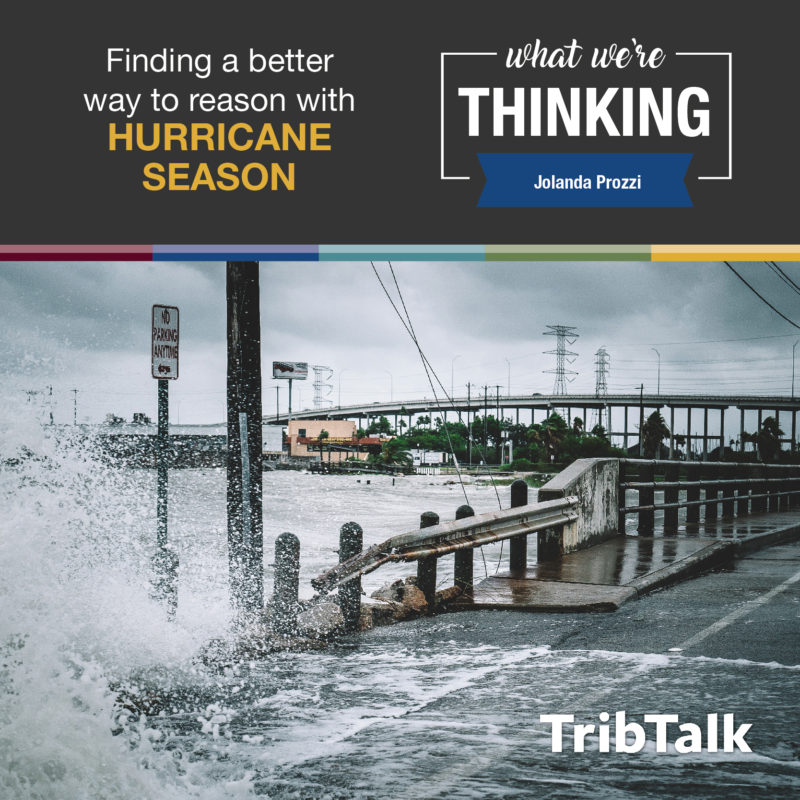The current tropical storm season has barely begun, and we’re still recovering from the last one, mindful of a few sobering realities:
- Weather and climate disaster events — which include hurricanes and other major flooding — are becoming more frequent. According to the National Oceanic and Atmospheric Administration, the U.S. suffered 203 such events from 1980 to 2016, 84 of which were in Texas. More than one-third took place from 2010 to 2016.
- These events are becoming more expensive. With $125 billion in damage, Harvey was one of the costliest storms in U.S. history, second only to Katrina 12 years before.
- The current season is likely to bring more of the same, as Colorado State University’s department of atmospheric science predicts “slightly above-average activity,” anticipating 14 named storms, Alberto being the first. Half of those will be hurricanes.
While these events disrupt our lives in vast ways, it’s perhaps the impact on our transportation system that’s most conspicuous. Harvey shut down the Port of Houston for eight days, forcing ships to wait offshore or divert to other U.S. ports and choking off the region’s oil and gas supply. Railroad operations screeched to a halt, requiring extensive inspection and repairs on hundreds of miles of track. Persistent floods from 50 inches of rain weakened infrastructure foundations, collapsing entire roadway sections, compromising response times for emergency crews and stranding countless people.
Transportation systems have traditionally been designed to withstand historical ranges of extreme weather and climate, but documented increases in storm frequency and severity make historical records a weak predictor of future risk. We have historically responded to weather and climate disasters in a reactive way, turning to established rehabilitation and repair practices to return service to pre-storm levels. For a time, that worked, but as demands on our infrastructure system grow along with the population and funding to meet those demands lags behind, that strategy no longer makes sense.
Instead, we should focus more on preparation and planning, asking three questions:
- Which elements of the transportation infrastructure are most vulnerable to extreme weather and climate events?
- What are the potential impacts and financial costs from likely damage, which may be immediate and apparent in some cases but chronic and cumulative in others
- How can we learn from the impacts of these events and adapt the infrastructure to make the transportation network more resilient?
In recent years, federal transportation agencies have been working to integrate climate change impacts into planning and operations. That effort requires that we adopt new paradigms to make our infrastructure more resilient, better able to withstand massive and devastating natural forces. These weather events are inevitable, but the new paradigm suggests that much more can be done to minimize their impacts on transportation systems when and where they occur.
A new research effort just undertaken by the Texas A&M Transportation Institute, funded by the Federal Highway Administration and administered by the Texas Department of Transportation, uses the Houston region as a laboratory to explore and improve transportation resilience. Findings are expected in late 2019. With its history of extreme weather events, a large population, a vast network of roadways and railways and the second-largest seaport in the nation, there’s likely no place in the U.S. more ideally suited to provide a case-study to prepare for and recover from major weather and climate disasters.
Any severe storm – even if it falls short of rivaling Harvey – poses severe risks to our transportation system. Increasingly frequent and severe storms leave behind devastation with massive financial costs associated with loss of service, repair and recovery. Other costs, like those that result from permanent rips in the fabric of communities, can never be recovered.
We can’t prevent major weather and climate disasters. But by investing resources into effective planning and engineering, we can make our systems more resilient, minimize losses of service and restore transportation service more quickly and completely.
Jolanda Prozzi is a Senior Research Scientist with the Texas A&M Transportation Institute.
This article was originally published in TribTalk, July 5, 2018.
